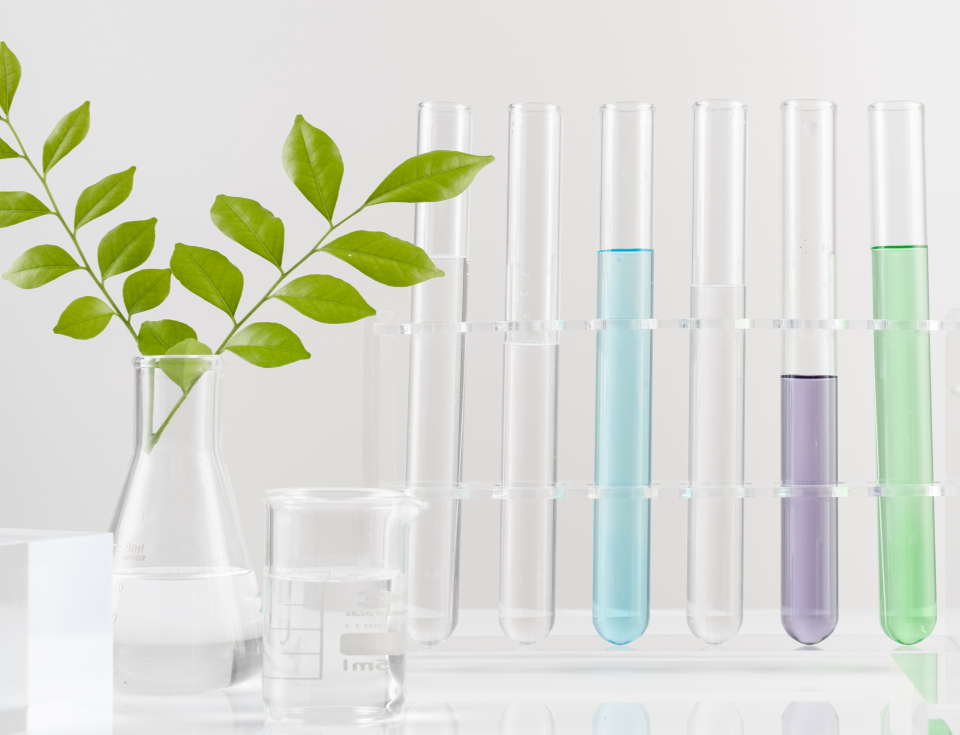Recycling an aluminum can saves enough energy to run a tv for two hours or a computer for three hours.
Sustainability and human health go hand in hand. Environmental Health and Safety (EHS) manage the use of chemicals and the disposal of hazardous waste at Weill Cornell Medicine, but researchers can take steps to make their labs greener.
Interesting fact: If labs could divert 2% of plastic from landfills, they would save 100 million metric tons of CO2.
(Source: The Rheaply Platform)
Work With Your Vendor
- Choose greener products: Ask your supplier for products made of more sustainable materials or less toxic ingredients.
- Order locally to reduce the footprint of transportation and fuel waste.
- Condense your orders once or twice weekly so products ship together with less packaging.
Reduce
- Avoid using unnecessary plasticware, solvents, and other materials.
--> For example, refillable pipette tips, use much less plastic than prepackaged ones.
--> Order samples rather then entire bottles for test experiments.
--> You could even condsider pouring your solution instead of pipetting it to avoid wasting tips (if the procedure doesn't call for a specific amount to be used).
- When possible, prepare bulk solutions to reduce tips and tubes, reorganize experiments to minimize tubes, plates, and tips, or explore alternative methods that have reduced steps.
- Use smaller plastic items when possible, and purchase plasticware made of recycled plastic.
- You can even reuse pipette tips. For instance, for 350µL, use a P200 twice instead of a P1000, or for 1800µL use a P1000 twice instead of a 2mL serological pipette.
Note: Over-ordering, improper storage or inventory management can result in expired or unused supplies, namely unnecessary waste and increased costs.
Reuse
- When possible, reuse certain plasticware (centrifuge tubes, weigh boats, cell culture plates), or use glassware, and autoclave if permissible. When considering what is reusable, it is best to check with the manufacturer.
Reuse reagent and media bottles – glass or plastic - as container for sharps contaminated with chemical or hazardous materials (which need to be kept separate from other regular sharp waste and disposed of by EHS). Note: No bottles which contained EPA –P-listed materials. Verify the compatibility of the waste with the container material, triple rinse, and cross out the labels.
- Repurpose working pieces from broken equipment.
Recycle
Recyclable items can include:
- Pipette Tip Boxes
- Non-Hazardous Reagent or Solvent Bottles (Triple-rinsed and with labels crossed out)
- Cardboard
- Clean aluminum foil
- Paper from labs.
Share Resources and Equipment
- Share with other groups by using distribution lists, reach out to neighboring teams directly, or using the Equipment & Reagents Sharing Page.
- Buy used equipment and then resell the equipment if still operational (check companies such as Cambridge Scientific, EquipNet, Rheaply, LabX)
- Use WCM Core Facilities when you can instead of buying your own new equipment. This way, you'll save resources and space in your lab.
Choose EnergyStar Products
Upgrade inefficient laboratory equipment and make sure to purchase EnergyStar products to maximize energy savings.
Shut the Sash
Fume hoods are one of the most energy-intensive pieces of equipment on campus and should be kept at the lowest possible level when working and closed when not in use. Please visit the EHS site for more information on the Shut the Sash initiative.
Minimize Energy Use
- Properly maintain ultra-low temperature freezers, including defrosting them at least once a year. Consider setting them to -70°C rather than -80°C. Learn more about ULT maintenance here.
- Turn off instruments and lights when not in use.
- Use outlet timers to schedule auto-turns on/off (drying oven, water bath).
- Reduce the use of AI (check out this Nature paper). Choose Google search over AI since it consumes 10 times less energy.
Avoid Water Waste
- Inform Facilities Management & Campus Operations immediately of any leaks in your lab.
- Run the autoclave only at full load and with water-saving cycles. In Belfer, autoclaves are programmed for automatic schedules, usually M-F 6am-8pm. If the schedules can be shortened, please contact the Belfer autoclave manager. Autoclaves require constant water to temper steam condensate to drain, even when they are on standby, at the rate of 1 gallon per minute!
- Use purified water only when really needed. It takes about 3 liters of water to make 1 liter of deionized water. Moreover, to make purified water, you need energy for the purification process.
- Use metallic bath beads instead of a water bath. Did you know: you can cool metallic beads in the -80 and use them to keep samples frozen instead of dry ice?
- Avoid single-pass water coolers and use systems that recycle the water (like recirculating chillers) or substitute water-cooled condensers with waterless condensers (CondenSyn Waterless Air Condenser, Findenser).
Consider Green Chemistry Alternatives
Substitute toxic ethidium bromide with GelRed®, GelGreen®, or SYBR® Safe. Beyond Benign is a great resource. The free Millipore-Sigma tool DOZN can help you understand which synthetic route is more environmentally friendly, as well as the ACS Solvent Selection Tool.
Plan Microscale Protocols
Plan microscale protocols before scaling up to save money and reduce material usage.
Rethink Your Operating Procedure
Don't just do what a protocolo says because people in your lab always did it that way. Question every steps and see where oportunities for more sustainable preactices arise.

